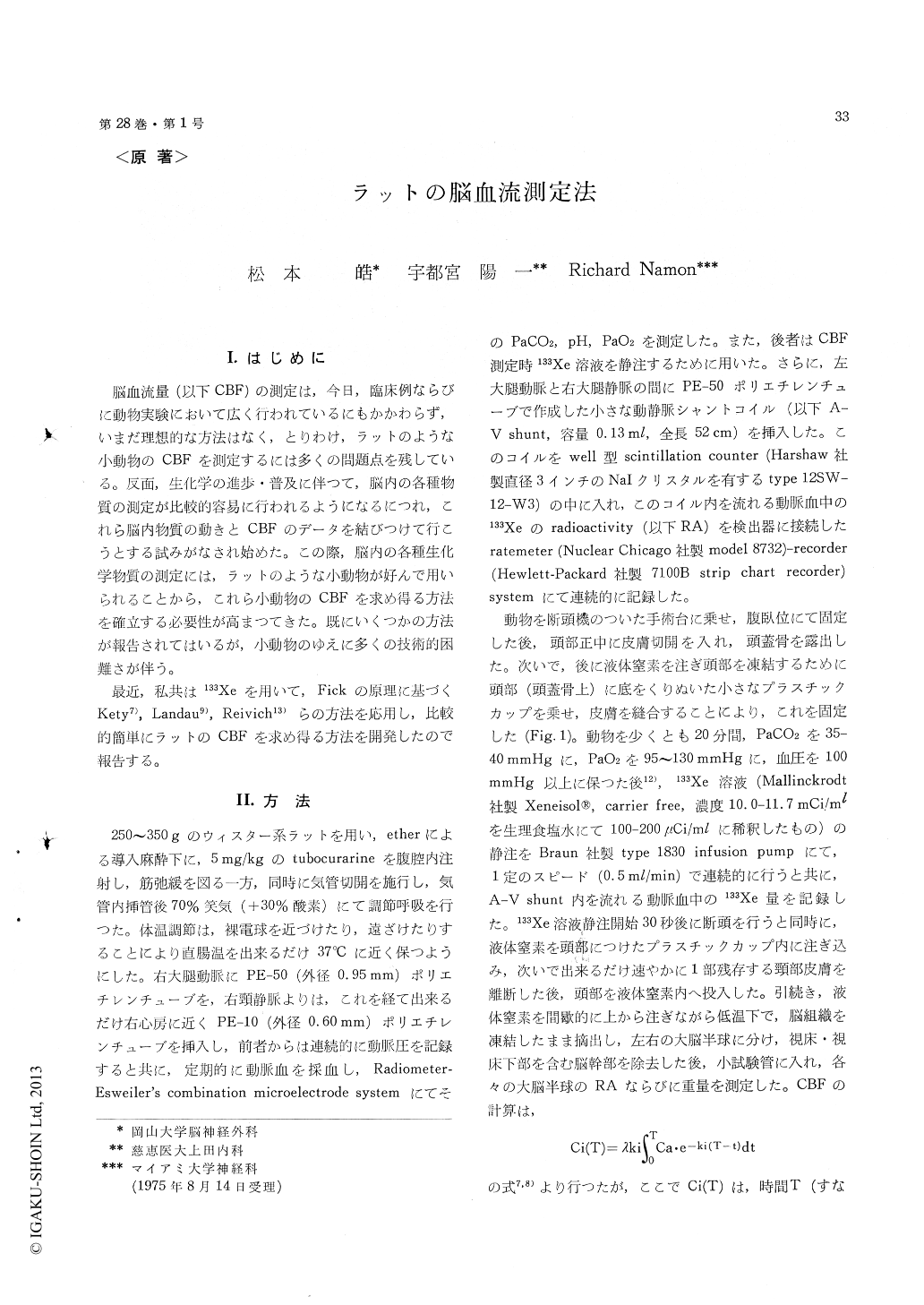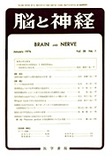Japanese
English
- 有料閲覧
- Abstract 文献概要
- 1ページ目 Look Inside
I.はじめに
脳血流量(以下CBF)の測定は,今日,臨床例ならびに動物実験において広く行われているにもかかわらず,いまだ理想的な方法はなく,とりわけ,ラットのような小動物のCBFを測定するには多くの問題点を残している。反面,生化学の進歩・普及に伴つて,脳内の各種物質の測定が比較的容易に行われるようになるにつれ,これら脳内物質の動きとCBFのデータを結びつけて行こうとする試みがなされ始めた。この際,脳内の各種生化学物質の測定には,ラットのような小動物が好んで用いられることから,これら小動物のCBFを求め得る方法を確立する必要性が高まつてきた。既にいくつかの方法が報告されてはいるが,小動物のゆえに多くの技術的困難さが伴う。
最近,私共は133Xeを用いて,Fickの原理に基づくKety7),Landau9),Reivich13)らの方法を応用し,比較的簡単にラットのCBFを求め得る方法を開発したので報告する。
Much recent work has appeared on biochemicaldata in rat brain. In many experiments the valueof cerebral blood flow would add important infor-mation. Consequently, it is desirable to developa method which can easily measure cerebral bloodflow in a small animal.
The cerebral blood flow was determined in therat under 70% nitrous oxide anesthesia and pento-barbital anesthesia. The application of Fick princi-ple technique of Kety et al., was modified utilizingXe-133 infused intravenously steadily for 30 secondsat which time the animal was decapitated and thehead frozen in liquid nitrogen. A prior femoralartery to femoral vein shunt was led through a poly-ethylene catheter of 0. 13 ml volume. This catheterpassed as a coil in a NaI crystal well-counter withthe arterial Xe-133 concentration curve recordedby a ratemeter-recorder system. The results ofthe hemispheric blood flow were: under 70%nitrous oxide anesthesia in normocapnia (PaCO238 mmHg), 86+15 ml/100 g/min; with hypocapnia(PaCO2 20mmHg), 40±5ml/100g/min; with hyper-capnia (PaCO2 63 mmHg), 187±10ml/100g/min.With pentobarbital anesthesia (PaCO2 38 mmHg)hemispheric blood flow was 41±8 ml/100g/min.
The method has the important advantage of be-ing accomplished in a short time interval of 30seconds, allowing short time steady-state require-ments, of assessing either regional, hemisphere orwhole brain flow and of allowing measurement ofany other metabolic, biochemical or pharmacologicalvariable in the very same tissue, subject only tolimitations which are discussed. It is adaptable toother radionuclide tracers with modifications. Thecalculations can be delived easily without resortingto a computer, and the method employs equipmentlikely to be readily available in a laboratory wheregamma radionuclides are used, without major alter-ations in equipment.

Copyright © 1976, Igaku-Shoin Ltd. All rights reserved.


